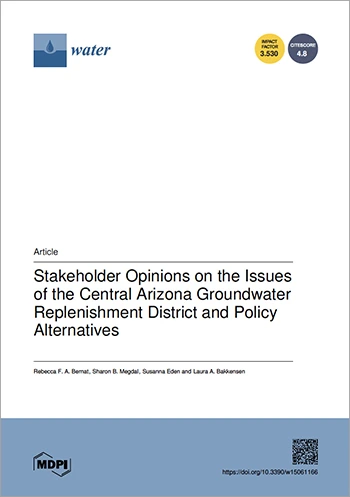
Arizona has been at the forefront of groundwater management since the establishment of the Groundwater Management Act in 1980. The Central Arizona Groundwater Replenishment District (CAGRD) is a groundwater management mechanism that facilitates development in regions of Central Arizona where the use of groundwater is limited by law. Several stakeholders have raised concerns about some of the CAGRD’s operations; however, stakeholders have yet to agree on the definition of the problems, let alone how the CAGRD might be improved. This study uses statistical and inductive thematic content analysis of a survey to determine (1) the CAGRD issues that stakeholders view as problems and (2) whether opinions differ significantly among different stakeholder groups. This study also uses deductive thematic content analysis to examine semi-structured interviews with CAGRD experts in order to find potential solutions to the CAGRD-related issues that are considered problems by stakeholders. The survey results show that long-term uncertainties related to the availability of renewable water supplies and hydrologic disconnect, where groundwater pumping and replenishment take place in different sub-basins, are stakeholders’ chief concerns. Sector affiliation and CAGRD membership status are associated with stakeholders’ opinions on some, but not all, questions. The potential policy changes offered address problems identified by stakeholders. This research will inform forthcoming policy discussions regarding groundwater management in Central Arizona as the state’s decision makers look to improve the CAGRD in the context of water scarcity exacerbated by climate change

